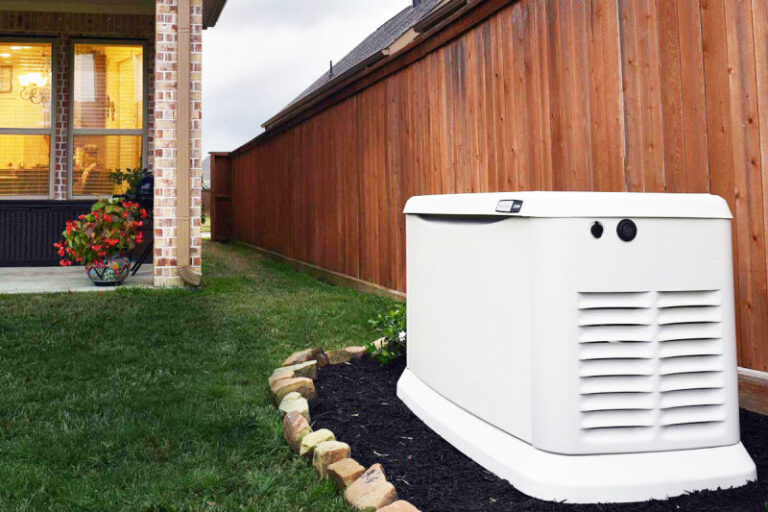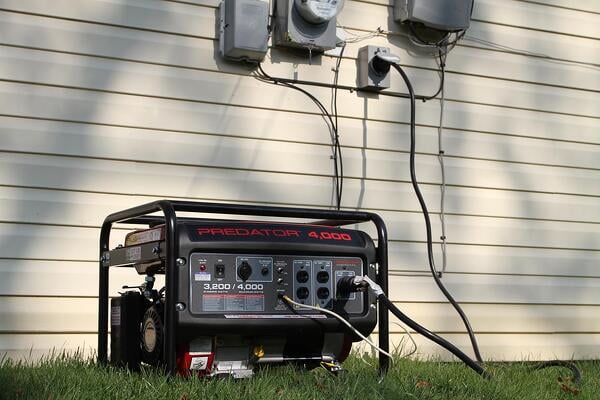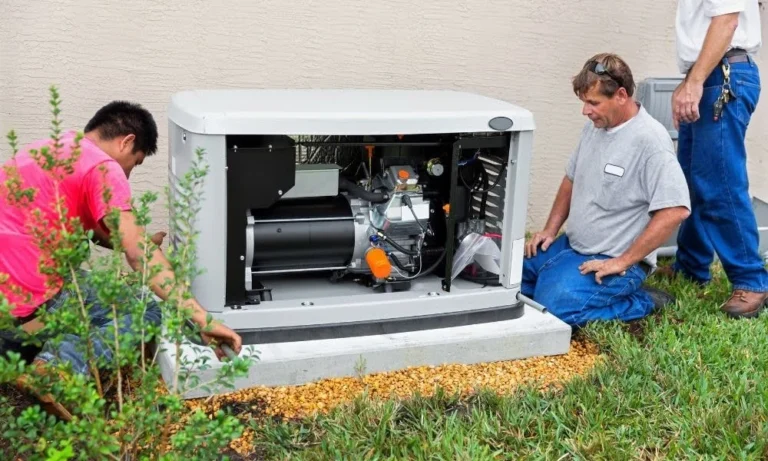Generator Safety Tips for Home
When the power goes out, a generator can feel like a lifeline, providing that crucial electricity to keep our homes warm, our food fresh, and our electronics charged. However, as helpful as generators are, they require careful handling to ensure they don’t become a hazard themselves.
Generators are a popular solution for power outages caused by weather, utility problems, or other issues. They can power everything from lights and refrigerators to sump pumps and computers, helping maintain comfort and safety during emergencies. Backup power is more than just a convenience—it can be a necessity, for families reliant on electrically powered medical devices or those in remote locations, having a generator can be a life-saving decision.
In this guide, we’ll dive into the essentials of generator safety at home, touching on the importance of backup power and how to use these powerful machines safely.
Understanding Generator Safety
Using a generator improperly can lead to dangerous situations, including carbon monoxide poisoning, fire hazards, and electrical risks. Ensuring safety when operating any type of generator is vital to protect your home and family. The main risks include carbon monoxide (CO) poisoning from the toxic engine exhaust, electrical hazards from improper use, and fire hazards from flammable fuel. Each year, people die or are seriously injured from these preventable accidents.
The Consumer Product Safety Commission reports that each year, hundreds of people die from CO poisoning related to generators. Many more are treated for non-fatal CO inhalation. Additionally, improper generator use can lead to fires and severe electrical shocks.
Types of Home Generators and Their Safety Features
Portable Generators
Portable generators are the most common type for home use. They are versatile but must be used with caution. Most modern portable generators include automatic CO shutoff systems that detect harmful levels of carbon monoxide and shut down the generator before it becomes dangerous. They may also have ground-fault circuit interrupters (GFCIs) to prevent electrical shocks.
For safety use:
- Always operate a portable generator outdoors and away from windows, doors, and vents to prevent CO buildup.
- Never plug a generator directly into a home’s wiring. Use a power transfer switch or plug appliances directly into the generator.
Standby Generators
Standby generators offer a more permanent solution and kick in automatically during a power outage. These generators are typically installed by professionals and include features like automatic overload protection and emergency shutdown.
For installation safety:
- Ensure installation by a qualified electrician to comply with local electrical codes.
- Regularly test and maintain the generator according to the manufacturer’s guidelines.
Inverter Generators
These are known for their efficiency and quiet operation, making them ideal for use with sensitive electronic devices. Inverter generators produce fewer emissions and are often equipped with enhanced safety features, including low-oil shut offs and smart throttle systems.
Safe operation guidelines include:
- Use heavy-duty extension cords to connect appliances.
- Keep the generator dry and operate it on a flat, stable surface to avoid accidental tipping.
Pre-Use Safety Checklist
Before starting your generator, it’s critical to perform a thorough inspection and maintenance check to ensure it’s in good working order; this includes checking oil levels, inspecting fuel lines for leaks, and ensuring that all connections are secure. It’s also essential to equip yourself with the necessary safety gear such as gloves and goggles, and to use the correct cables and plugs that meet the power requirements of your generator to avoid overheating or potential fires.
Proper Generator Placement
Always place generators outdoors, away from windows, doors, and vents to minimize the risks associated with carbon monoxide (CO) build-up. The myth that generators can be used indoors with ventilation is dangerously false.
No part of a generator should be operated inside homes, garages, or other partially enclosed spaces. The risks of placing and using generators indoors include deadly CO poisoning, fire hazards, and potential explosions. Safe alternatives include using battery backups or portable power stations indoors while keeping generators outdoors.
Operating a Generator Safely
When operating a generator, it’s essential to follow specific starting and stopping procedures. Begin by checking that the generator is in a safe, outdoor location and that all connections are secure. When stopping your generator, let it run on idle for a few minutes to cool down before turning it off, and always turn off the fuel valve to prevent leaks.
Fueling your generator safely is paramount. Only use the correct fuel type specified by the manufacturer to avoid damaging your generator. Store fuel in a cool, well-ventilated area in properly labeled, ANSI-approved containers to minimize the risk of fire.
Electrical safety is also critical when using a generator. Ensure that your generator is properly connected. Install a transfer switch that allows the generator to connect safely to your home’s wiring. Monitor connected appliance loads to avoid overloads and short circuits, and ensure your generator can handle the electrical load without exceeding its capacity.
Managing Generator Exhaust
Managing the exhaust from generators is important to prevent carbon monoxide poisoning. Ensure your generator is in a well-ventilated area and consider using battery-operated carbon monoxide alarms near the generator and inside your home to alert you to dangerous CO levels.
Regular maintenance, such as checking the exhaust system for damage or obstructions, is vital for safe operation. Proper ventilation strategies include positioning the generator so that prevailing winds help disperse exhaust fumes away from nearby buildings and living areas.
Weather Considerations
Using generators during adverse weather conditions demands additional safety measures to ensure their proper functioning and to avoid hazards. In scenarios like storms or high winds, it’s crucial to anchor your generator securely and provide a cover that protects it from rain, while ensuring it still has plenty of ventilation to prevent carbon monoxide build-up.
Seasonal maintenance is also essential; before the onset of severe weather seasons such as hurricane or blizzard seasons, make sure to perform checks and replacements as needed—this includes changing the oil, replacing old fuel, checking battery health, and ensuring all connections are tight and corrosion-free. This proactive maintenance helps in reducing the likelihood of generator failure during critical times.
Long-Term Generator Storage
Proper procedures must be followed when storing your generator for long periods to ensure it remains in good working condition. Begin by draining the fuel from the tank to prevent degradation and residue buildup inside the engine, which can lead to operational issues when you next use the generator.
After draining the fuel, run the engine until it stops to ensure all remaining fuel is consumed from the carburetor. A protective cover should be used to shield the generator from dust and debris, keeping it clean and ready for immediate use when needed.
Emergency Situations
Handling emergencies related to generator use requires immediate and informed actions to mitigate risks and ensure safety. If a fire occurs, promptly use a Class B fire extinguisher, which is suitable for flammable liquids like gasoline, and ensure you are trained on its usage. Electrical malfunctions should be addressed by immediately shutting down the generator and checking for issues such as overloaded circuits, short circuits, or improper connections that may pose fire risks or damage your electrical system.
In the event of carbon monoxide poisoning, swift action is important. Recognize early symptoms like headache, dizziness, or nausea, and move to an area with fresh air right away while calling for medical help.
Environmental Considerations
In an effort to minimize environmental impact, considering eco-friendly generator options is crucial. When replacing old generators, proper disposal practices should be followed to avoid environmental pollution; local recycling centers often provide guidelines on how to dispose of engine oil and old equipment responsibly.
To reduce noise pollution which is a common issue with generator use, look for models that feature quieter operations or invest in soundproofing enclosures to dampen noise, which enhances comfort for both you and your neighbors.
Generator Maintenance Tips
Regular maintenance is key to ensuring your generator operates efficiently and lasts longer. Weekly checks should include inspecting the unit for leaks and ensuring that all connections are secure. Monthly maintenance involves changing the oil, cleaning or replacing air filters, and checking the battery. Annually, it’s important to review the entire system more thoroughly, including changing spark plugs and a full inspection of the fuel system.
Troubleshoot common issues like starting difficulties or unusual noises early to prevent bigger problems down the line. If these issues persist or you encounter complex problems, calling a professional is advised to ensure safety and proper handling.
Legal and Regulatory Compliance
Owning and operating a generator comes with certain legal and regulatory responsibilities. Depending on your location, you may need permits for installation, especially for larger, permanently installed units. Regular inspections might also be required to comply with local safety standards. Additionally, ensure your generator meets national standards set by organizations like the Environmental Protection Agency (EPA) for emissions to avoid fines and contribute to environmental preservation.
Accessories and Enhancements
Enhancing your generator’s functionality and safety can significantly improve its performance and ease of use. Installing an appropriate power transfer switch that connects your generator directly to your home’s circuit panel, eliminating the use of cumbersome extension cords and reducing risks. Speaking of cords, using heavy-duty extension cords and power strips that can handle the load will prevent overheating and potential fire hazards.
Upgrading your generator with smart technologies can also enhance its efficiency and allow for features such as remote monitoring and automatic troubleshooting, further streamlining the power management during outages.
Powering Your Home Safely and Responsibly
While generators are invaluable for ensuring power during outages, their safe and responsible use cannot be overstated. From choosing the right eco-friendly options and maintaining your unit properly to adhering to legal requirements and enhancing your setup with the right accessories, each step contributes to safer, more efficient, and environmentally friendly generator use.
Remember, the power to manage your generator wisely is entirely in your hands. By following these guidelines, you ensure the safety of your home, compliance with regulations, and protection of the environment.










